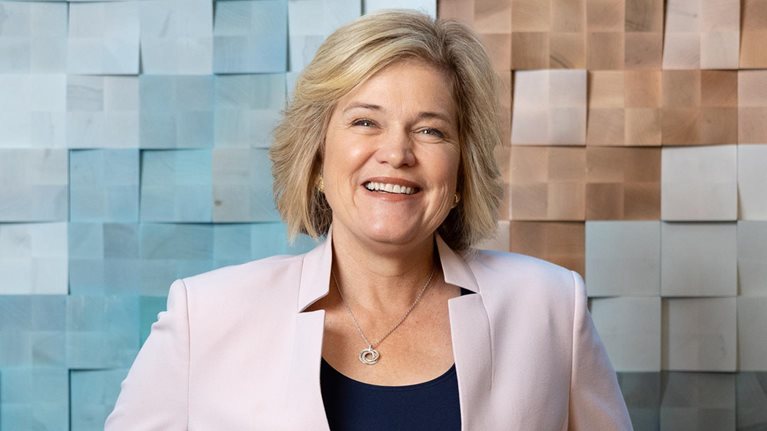In this episode of the Inside the Strategy Room podcast, two experts discuss programmatic M&A, an approach to mergers and acquisitions that over many years has proven to be the most successful at delivering results—provided you execute it right. Robert Uhlaner, who co-led McKinsey’s Strategy and Corporate Finance practice until his retirement this summer, and Liz Wol, the global leader of McKinsey’s work on M&A capability building and programmatic M&A strategy, explain what programmatic M&A is, why it works, and how to do it. This is an edited transcript of the discussion. For more conversations on the strategy issues that matter, follow the series on your preferred podcast platform.
Sean Brown: McKinsey’s research on M&A and corporate performance has been ongoing for 12 years. What does it involve and what motivated you to start it?
Robert Uhlaner: We study the Global 2,000, which are the 2,000 largest public companies over the previous decade. A lot of M&A value creation research that we, as well as academics and banks, conducted historically missed a big part of M&A activity. In the past ten years, the Global 2,000 alone did 21,000 deals valued at almost $7 trillion. Most research, however, looks at announcement effects—the reaction to the deal upon its announcement—as well as synergy capture and other elements that pertain mainly to large deals. The problem is that 70 percent of deal activity, or roughly $5 trillion worth, comprises deals too small to measure one at a time, so we turned the focus to the kinds of M&A programs that drove long-term value creation, not whether individual deals created value.
Sean Brown: What factors in M&A transactions did you study?
Robert Uhlaner: The two variables that define an M&A program are pretty straightforward. One is the number of deals that you do per year, which is a proxy for M&A capability building, and the other metric is the value of the deals. We found that those two variables differentiated performance over the long term, and we came up with four segments. With the first one, we answered the perennial question of what constitutes a large deal. A large deal is a relative metric, and we found that the magic number, time and time again, was a deal worth more than 30 percent of the buyer’s market cap. A large deal triggers a transformative event that over time will make or break the performance of the company. Having experience doing smaller deals is not correlated to those outcomes because small deals build different capabilities.
The second and probably most important segment is what we call “programmatic M&A.” Many are familiar with the term “serial M&A”; programmatic M&A is similar in that it involves numerous deals—the median in our sample is 3.6 deals per year but many companies in this category do five, ten, 15 deals—but its purpose is to materially add market cap by building businesses. The other two strategies, selective and organic, which dominate the Global 2,000, involve players that are either opportunistic about doing occasional deals or companies that have not built M&A capability and are largely pursuing growth organically.
Sean Brown: What was the overriding conclusion when you compared these different deal strategies?
Robert Uhlaner: The first thing we looked at was survivorship. Of the top 100 companies that started the past decade in the Global 2,000, 59 had built programmatic M&A capability—in other words, a standing team and an approach to building businesses. Those that neglected to build M&A capability were less likely to be able to reshape their portfolios and survive.
Many companies perceived M&A as risky. Our study suggests that the organic strategy of doing no M&A has the largest standard deviation and, in fact, is the riskiest.
We also looked at performance in terms of excess TSR [total shareholder returns], which is similar to alpha. How do the companies perform relative to their peer benchmarks? That is important to wash out the cyclicality of industry performance and see what really affected share price. We found the median excess return for companies using programmatic M&A to be 2.1 percent over ten years, which means that they outperformed their peer groups by at least 20 percent in TSR. The other M&A segments were zero or negative (exhibit). I also want to point out that many boards and companies perceived M&A as risky. Our study suggests that the organic strategy of doing no M&A has the largest standard deviation and, in fact, is the riskiest.

Sean Brown: Why would that be the case?
Robert Uhlaner: If you have a tailwind, you should ride it, but as a company becomes larger, the likelihood that over a ten-year period it can commit capital at a large enough scale to move with its industry or diversify its portfolio is fairly low. Companies that build M&A capability have less risky portfolios because they can be agile and adapt. And we consistently see that practice makes perfect. As I mentioned earlier, the median number of deals in the programmatic M&A segment is 3.6, but as companies average more than five deals per year, or 50 or more over a decade, their performance grows significantly better while the risk declines.
Sean Brown: Do you often see scenarios where a large deal serves as the precursor to a series of smaller deals?
Robert Uhlaner: Yes. We are seeing a lot of digital M&A to build new businesses now and, historically, a large deal that serves as an anchor you build around was a common strategy. However, while those deals were large in absolute terms, they were not transformative in the sense that they did not represent 30 percent of the acquirer’s market cap or revenue, and that is what the large-deal metric tracks.
Sean Brown: What role does M&A play in helping to force resource reallocation decisions?
Robert Uhlaner: Much of what we are saying is that M&A cannot be opportunistic; you need a plan. Once you know what it takes to win in certain segments, you typically cannot commit capital and build capability fast enough without acquiring additional capability. Keep in mind that the winners in programmatic M&A don’t incubate. They define a business and commit capital to a scale that will make them the number one, two, or three player—not number ten.
Sean Brown: In addition to the quantitative research, you also looked at the practices programmatic acquirers use to make the most of their acquisitions. What are the most important ones?
Liz Wol: We have coined the term “the three Cs”: competitive advantage, conviction, and capacity. Top programmatic acquirers create an M&A blueprint or road map that states where and how M&A will enhance their competitive advantage. This would not, for example, be a European company saying, “We will use M&A to enter into North America.” That is far too broad and not actionable. A well-defined M&A theme might say, “We are a healthcare company that realized through COVID-19 that we had better get our act together on telehealth, so we will use M&A to acquire and scale telehealth capabilities.” Or, “We are a rideshare company and will use M&A to acquire the tech platform we need to launch a food-delivery business on top of the rideshare business.” Those are very specific.
The caveat is that even the most adept programmatic acquirers can handle at most three M&A themes at a given time. If your list of M&A themes runs to six or 12, I would urge you to identify the two or three on which you can move the needle in terms of your corporate strategy within two to three years.
The next C, which is conviction, means that your executive team, business unit leaders, and the board are aligned on those top two or three M&A themes and are primed to execute, which includes being ready to allocate the needed capital. A good test to know if you have met the conviction bar is to ask at your next executive team meeting, “What are our top two M&A themes that we need to pursue in order to deliver our corporate strategy?” Are your colleagues all saying “telehealth and food delivery,” or are you getting a laundry list of things people thought up on their ride into the office that morning?
Another tool that helps build conviction is putting pencil to paper and sketching out the business case for that M&A theme agnostic of any given target. What growth expectations do you have to meet to succeed in that theme? What synergies would you need in order to make a series of deals work and what capital would you require, both from an acquisition standpoint and to later unlock the full capability of that asset?
Subscribe to the Inside the Strategy Room podcast
Sean Brown: I would think downturns, like the one we’ve just been through, might undermine those convictions. Did you find that programmatic acquirers stuck to those convictions even in economic crises?
Liz Wol: Programmatic acquirers still performed the best and with less risk than other M&A types in our sample. We believe this is because they had their M&A blueprint clearly defined–they did the work to create conviction so when a downturn did occur, they were not having second thoughts or hesitating before going ahead with their strategy.
Sean Brown: Let’s talk about the final C. What does capacity mean in the context of M&A best practices?
Liz Wol: Capacity can mean several different things. From a cash perspective, do you have the capacity to implement a given M&A theme? What about from a capital structure standpoint? Most important, however, is operational capacity. Do your M&A or corporate development team as well as the business leader who owns this M&A strategy have the capacity and capabilities to integrate these assets? You have to remember that with programmatic M&A, we are not simply talking about stripping out SG&A [selling, general, and administrative expenses] and letting the asset flourish. It often involves coming up with a new product or entering a new market or using the acquisition as a launchpad for a new capability that may transform the core business. The amount of thought and energy it takes is high, so it is important to be prepared.
Sean Brown: Robert mentioned earlier that programmatic M&A is different than serial M&A. Can you clarify the difference between those two strategies?
Liz Wol: Programmatic M&A is not about meeting a deal quota in a given time period but rather about building a business or capability through a series of deals—maybe combined with some organic business builds—to create something new and substantial. If you have outlined the competitive advantage in your M&A blueprint, have the conviction in terms of everyone rowing in the same direction and being willing to make these bets, and you have freed up the appropriate people on your teams, those are the three key ingredients to achieving the quantitative results Robert shared earlier.
Programmatic M&A is not about meeting a deal quota but rather about building a business or capability through a series of deals—maybe combined with organic business builds—to create something new and substantial.
Sean Brown: How to you start implementing a programmatic M&A strategy?
Liz Wol: First and foremost is taking a critical look at your corporate strategy and mashing that up against the market forces and trends affecting your sector or the sector you want to enter via programmatic M&A. Next, distill from what is probably a long initial list of potential M&A themes the one, two, or three you will pursue. From there, you would go into proactive deal sourcing. This is not saying, “What are the three hottest assets for sale in the market?” Rather, you need to ask what assets currently exist, regardless of whether or not they are for sale. Then, how would you describe your vision to these companies that would get them excited about being acquired by or partnering with you? After that, you are into the typical deal funnel of diligence, negotiation, and integration, but if you can nail the front end of the process, your odds of success later increase dramatically.
Sean Brown: How should companies run these M&A programs so the three Cs you talked about turn into a real capability?
Robert Uhlaner: What wins the day for programmatic acquirers is concentrating caseload experience around a central team. The deals should not get bifurcated as “little deals are the purview of business units and big deals are corporate events.” Small deals are great for building experience on the team and serve as practice in driving M&A capability building. The role of the strategy and corporate development team is to help the business units build the business case and blueprint and support proactive sourcing once the businesses have a solid plan and have identified the capabilities they need. As a sidebar, successful programmatic acquirers do not run M&A like a procurement process. They run every deal like a partnership with a business leader who is creating deal flow. We have done satisfaction surveys for clients, and it is remarkable how some targets are beaten down after they have gone through the process and others are motivated. That has a huge impact on value creation.
Sean Brown: How do you make sure the deals the business units are pursuing tie into the corporate strategy?
Robert Uhlaner: One critical thing is having a well-defined, simple stage-gate process. The first stage gate is strategy approval: “Yes, this deal is on strategy.” The second is typically approval to negotiate and begin diligence. The third is deal approval. In many companies, however, the first milestone is a meeting with delegates as opposed to a meeting of the senior people who have the authority to say no. That is a big mistake. It’s where you get a lot of churn and focus dissipates.
Sean Brown: A lot of money, including from private equity, has been flowing into the markets. How do you maintain a programmatic approach when all this capital is bidding up prices?
Robert Uhlaner: The biggest success factor is proactive sourcing, where you are creating your own deal flow. You won’t necessarily keep a deal out of play but you, as a strategic buyer, have a value proposition that differs from someone just writing a big check. And you have shares, so you can share in the value creation with a target and drive real synergies around that.
Liz Wol: You need to be able to pencil out the deal, particularly in some of the sectors that are seeing crazy valuations right now. If it doesn’t add up, you should probably reconsider that first C of competitive advantage.


